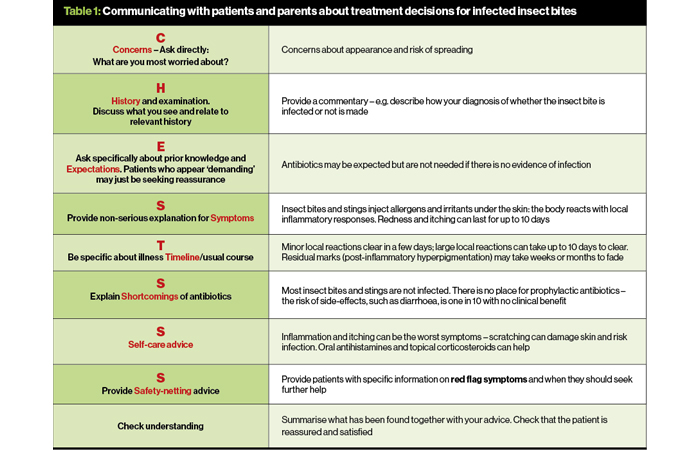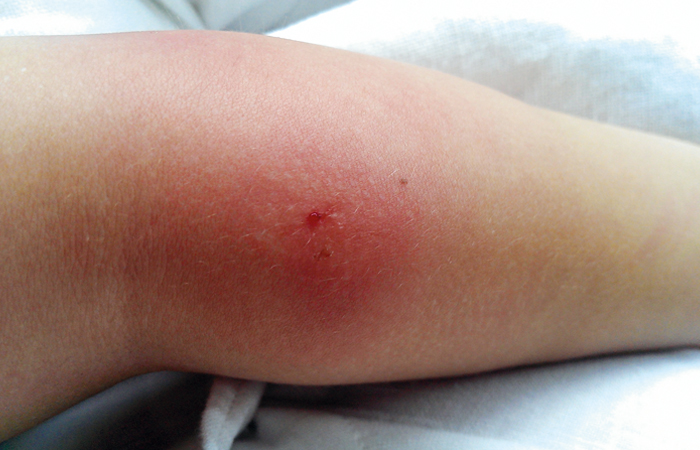Management options
Rapid-onset reactions to bites or stings are likely to be allergic or inflammatory responses. Infection is unlikely to be evident until at least 48 hours after the bite or sting. Local inflammation, shown by redness, heat, swelling and pain, will usually subside.
However, if it spreads over next three days and/or a purulent discharge develops, then infection is likely. One way to gauge spread is to draw around the affected area with an indelible marker and ask the patient to monitor and return if it worsens.
The decision not to supply an antibiotic until the Gateway Point is reached will need to be communicated clearly and carefully – including that there is no need for antibiotics ‘just in case’.

CHESTSSS. Derived from training materials at www.rcgp.org.uk/targetantibiotics

Suggested points to cover during the consultation with the patient about suspected infected insect bites are shown in Table 1. Self-care advice should also be provided.
If the Gateway Point on the clinical pathway is reached, the first-line treatment is a five-day course of flucloxacillin. Remember to check for penicillin allergy and supply alternative (clarithromycin or erythromycin subject to inclusion/exclusion criteria) if necessary.
A discussion based on the CHESTSSS framework (see Table 1) will provide an opportunity to educate patients about appropriate and effective use of antibiotics and to reinforce good antimicrobial stewardship.
Self-care advice
Ensure that patients get the best out of treatment by providing self-care advice:
- If the stinger is visible in the skin (from a honeybee), remove as soon as possible by scraping sideways with a finger nail or credit card
- If a tick is visible, remove as soon as possible using a tick remover or suitable tweezers. Pull up gently but firmly perpendicular to the skin. Avoid squeezing or leaving mouth parts in the skin
- Oral analgesics – paracetamol or ibuprofen – can be taken for pain
- Oral antihistamines such as chlorphenamine (sedating) or topical corticosteroids (hydrocortisone 1 per cent cream or ointment) may help to reduce itching and limit the temptation to scratch and further damage the skin
- Topical treatments such as antihistamine creams should be avoided as they can cause allergic skin reactions.

Honeybees have a barbed stinger and venom sac that is left in the skin as the insect flies away
